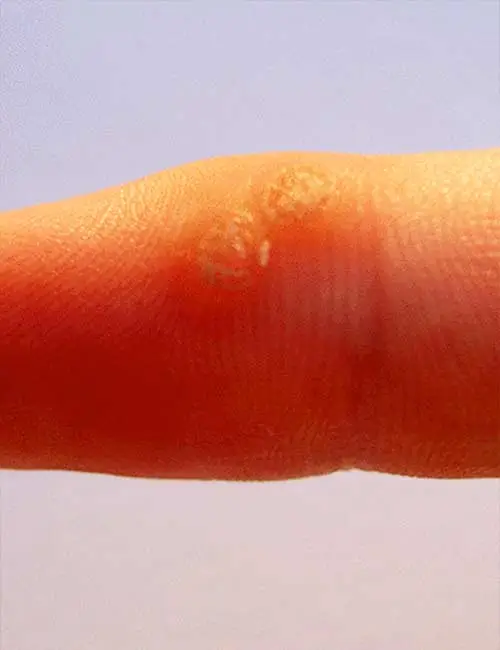Warts
The hands and feet are the most common sites for warts to grow on, although they can occur anywhere you have skin, including your scalp, nose and tongue. Since warts are caused by a virus (not by touching nasty little toads, as most of us were taught), they can be spread to other parts of the skin and to other people. Shaving over warts can irritate the skin and also further spread the warts on the face or legs.
Since warts often start out as small as a pinhead and grow fairly slowly, you may not notice them at first. Then it may seem as though they sprouted overnight. Plantar warts, which infect the soles of the feet, may be easily mistaken for corns or calluses.
Curing warts
Even though they are harmless, warts can be a difficult treatment problem. The method your doctor chooses will take into account the type and location of the warts, their size and number, the degree of tenderness when pressed, and your age, sex and history of previous treatment. Sometimes several different treatments are necessary and sometimes the warts fool everybody and disappear all by themselves!
Some common types of warts
- Common wart – Most frequently seen on the hands. Easy to treat, except around nails and fingertips, where resolution of the problem is much slower.
- Flat warts – Large numbers of barely visible little bumps, frequently due to shaving, which may be scattered over the entire face and legs.
- Plantar warts – Single or multiple, large callus-like areas on the soles of the feet.
- Filiform wart – A small, finger-like growth seen mostly in men.
- Genital wart – Present on the genitals and passed by sexual contact.
Q & A
Can scratching spread warts?
Certain types of warts tend to spread within scratch marks. Combing your hair can spread warts on your scalp, and shaving over warts can spread them, too.
Why is it that some people get warts and others don’t?
Some people appear to lack immunity to the wart virus. When warts disappear without treatment, it may be because the body has strengthened its immune-responsiveness.
Will I have scars after my warts are removed?
Many treatments are available that leave little or no scarring. Ask your doctor about them.
Home Wart Treatment
Materials
- Aldara
- Abrasive – either a) stiff brush, b) emery board, or c) pumice stone for scraping off dead wart tissue (note: fingernail brushes are usually too delicate; “potato” brushes found in the hardware stores work very well for this.)
- Duct Tape – it isn’t pretty, but it sticks well to the bottom of the foot, and it’s cheap.
Directions
- Take a shower or soak the affected area in warm water to soften up the skin.
- Use your abrasive of choice (see above) to scrape the wart down as far as possible. The excess tissue will look white and should scrape off easier than the surrounding healthy tissue.
- If you begin to see spots of blood, stop because you are too deep.
- Dry the wart and apply Aldara to the wart.
- Apply duct tape to the area and leave on for 24 hours. The tape is waterproof and should remain on even if you go swimming.
- Remove the tape. Repeat the previous steps daily until your next appointment.
If your wart was frozen with Liquid Nitrogen in the office, wait until the area is healed before starting the Duct Tape treatment.
Specific Wart Treatment Instructions
Wart medications that contain salicylic acid can be used to treat common warts.
- Soak the wart with warm water for five to ten minutes, or treat after bathing.
- Use an emery board or pumice stone to gently file down the surface of the wart so the medication can soak in.
- Apply wart medication only to the wart, not to the surrounding tissue. If the medication is a liquid, cover it with a Band-aid after it dries. If you are using a 40% salicylic acid patch or plaster, cut the plaster to the size of the wart and then apply tape.
- Repeat this treatment nightly until the wart resolves. This may take two to three months.
- Remember that skipping several nights gives the wart time to continue to grow and treatment may not be as successful.
- If pain develops from treatment, stop the medication and notify your doctor.
- This medication method should not be used in diabetics or persons with poor circulation.
- If you have not seen improvement with therapy after six to eight weeks, see your doctor for further advice. Remember, the wart may not be gone, but it should be starting to soften and improve at that time.





